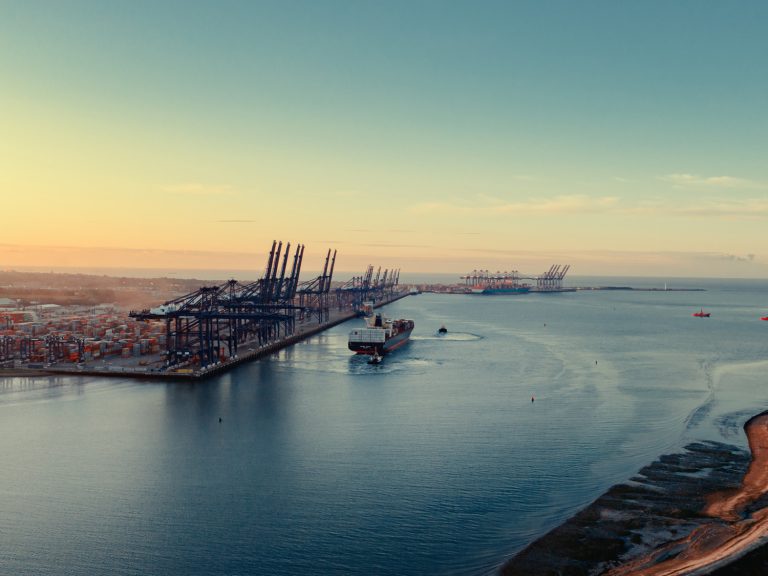
Date:
December 2022; Freight market summary review
As freight prices on every mode return to relative stability and the worst effects of inflation work though, the market is expected to rebalance, achieve ‘correction’ and ultimately recover with slow growth in 2023.
The spiking freight rates on all modes are falling away and, taking inflation into account, the global freight market is expected to grow over 27% this year, though that figure falls to -2.4%, when inflation is removed, reflecting the falling volumes and demand slumps.
AIR
More shippers and particularly those that switched modes, when vessel operating performance fell to historic lows, are busily switching back to sea freight, as ocean congestion ends and container freight rates recede towards pre-pandemic levels.
The stabilisation of sea freight rates and improvements in vessel schedule reliability is encouraging some shippers to move cargo between airplanes and ocean containers, and especially users of our supply chain management MVT platform.
With MVT it is easy to amend purchase orders and be agile in switching complete or partial orders from ships to planes, or vice versa, if SKU sales velocity change.
Despite rates on many routes continuing to soften, shippers are unlikely to delay booking and securing airfreight capacity, to wait and see how the market fares, because from an operational point of view, this would mean an enormous risk, if any market changes restricted capacity.
Time critical movements of cargo will always be necessary and unforeseen market dynamics will undoubtedly occur resulting in demand for air freight, whether through production delays or logistics interruption – history dictates that there will always be a necessity for airfreight, and usually at very short notice as world events continue to change, sometimes dramatically.
SEA
Freight rates have continued their decline with the market struggling to keep up and the carriers resorting to ever more drastic blanking programmes, to slow the price slide, or other tactics including cancellation of whole services or suspending vessel departures entirely – which is becoming more prevalent on many major routes.
The Asia-Europe trade remains under pressure with falling spot rates, a generally soft trading environment and no sign of the market bottoming out. Although contract rates for 2023 fixed validity and capacity assurance are hardening and increasing for the longer term situation in 2023 as carriers look to recover control of the current demand slump and balance supply to match.
Carriers are expected to announce more blank sailings/ cancellations as they seek to reduce the supply equation in their favour and while residual congestion is still impacting parts of Europe and the Americas, hopes are rising in China as the government finally begin to relax their absolute zero-COVID restrictions. Although they do still remain in a toned down form.
With transpacific volumes declining, rates have been falling, with west coast spot rates reaching something approaching pre-pandemic levels (it was only 12 months ago that rate levels on the spot market were at $20,000 per FFE) and while east coast rates have dropped, some capacity has been tied up in the continuing Savannah congestion and at other ports.
Transatlantic rates are starting to soften, particularly to Europe and while there is no change to capacity expected through the end of 2022, the expected fall in volumes is reducing port congestion and vessel waiting times on both coasts.
After what seems like an eternity most ports are finally turning vessels around on schedule, although times are still tight in Savannah, Houston, Oakland and Vancouver.
ROAD
European road freight rates hit an all-time high in 2022 as rising cost pressures, supply and capacity disruptions, regulatory change and the conflict in Ukraine created a potent mix of rate influenced drivers, but are beginning to reduce after Q3 peak.
Europe’s domestic road freight market is projected to grow by just 0.7% in real terms, while the European international road freight market is projected to grow by 2.1% in 2023.
A key driver behind the stronger performance of the international section might be retail and e-commerce sales which stimulate more cross-border flows of consumer goods.
Shortages of raw materials and intermediate products, together with weakening demand and energy shortages are clouding the outlook for the manufacturing sector in Europe,
Soaring diesel prices appear to have been subdued for now in the UK and the most recent EU data shows that the average weekly diesel prices in Q3 have fallen by 1.7% quarter-on-quarter. Although still incredibly high in reality and this could change very quickly from some of the consequences of global activity and the geopolitical landscape.
This represents at the very least a stabilisation of prices across the UK and Europe, with the momentum at the end of the last quarter appearing to be downward. However as widely reported in the trade, national and international press the UK, in particular, is still seeing issues with European trade levels and supply chain demand and supply availability.
Despite the ongoing challenges, we continue to find cost-effective international transport solutions, by every mode for every shipment, including urgent and time-sensitive cargo.
Please contact the below to learn more, or to discuss any of the issues covered in this market report.
SEA – Andrew.Smith@metroshipping.co.uk
AIR – Elliot.Carlile@metroshipping.co.uk
OVERLAND – Simon.Balfe@metroshipping.co.uk
Metro are here to assist with your decision making and planning for 2023 logistics strategy and options available. We are at the forefront of the market globally and will ensure you are best positioned to succeed in 2023. Please contact us – we encourage proactive knowledge based intelligence sharing and will always deliver on your expectations.
